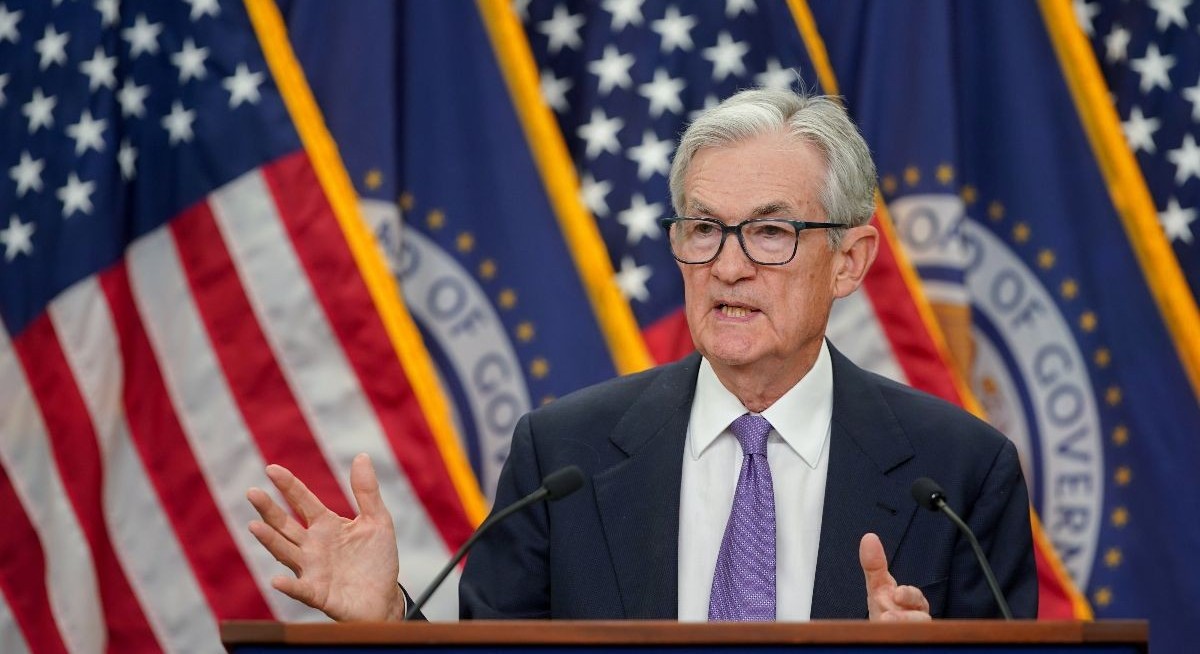The remarks seemed aimed at reining in expectations in financial markets, where the probability of another quarter-point cut in December was firmly above 90% before he spoke.
Treasury yields and the dollar jumped, while stocks turned negative after Powell’s comments. Interest-rate swaps showed traders see about a 60% probability for a quarter-point cut in December. Prior to the meeting, a move in December was almost fully priced in.
“It came off as more hawkish than we expected,” said Stephen Juneau, senior US economist at BofA Securities.
The Federal Open Market Committee voted 10-2 to lower the target range for the federal funds rate by a quarter percentage point to 3.75%-4%.
See also: US trade deficit unexpectedly shrinks to smallest since 2020
The Fed also said it would stop shrinking its portfolio of assets beginning Dec. 1, closing the book on a process that began in 2022. The Fed has since shed more than US$2 trillion ($2.59 trillion) in Treasuries and mortgage-backed securities, bringing the balance sheet below US$6.6 trillion, its smallest size since 2020.
In their post-meeting statement, Fed policymakers on Wednesday repeated their assessment that “job gains have slowed” and said “risks to employment rose in recent months.”
Officials also characterised economic growth as “moderate” and said inflation “has moved up since earlier this year and remains somewhat elevated.”
See also: Treasuries gain as Fed cuts, traders wager on two more in 2026
Dissents
Fed officials on both ends of the policy spectrum opposed the decision. Governor Stephen Miran, who joined the central bank last month and is on unpaid leave from his post as chair of the White House Council of Economic Advisers, dissented again in favor of a larger, half-point reduction. Kansas City Fed President Jeff Schmid said he preferred not to cut rates at all, after supporting last month’s rate reduction.
When pressed on his comments about the December meeting, Powell pointed to divisions on the committee.
“For some part of the committee it’s time to maybe take a step back and see whether there really are downside risks to the labor market, or see whether, in fact, the stronger growth that we’re seeing is real,” he said.
BofA’s Juneau said Powell’s comments were an attempt to incorporate the range of views among policymakers, including of those who are wary of further cuts. “There is a slew of voters on the committee who aren’t necessarily pushing for further easing soon,” he said.
The Fed chair also said the lack of economic data during the ongoing government shutdown may cause policymakers to proceed more cautiously. “If you’re driving in the fog, you slow down.”
Fed officials lowered rates last month for the first time this year after a marked cooldown in hiring raised worries about fragilities in the labor market.
To stay ahead of Singapore and the region’s corporate and economic trends, click here for Latest Section
Divided views
Wednesday’s move was widely anticipated after Powell said earlier this month that employment could weaken further. Additional declines in job openings, he said, “might very well show up in unemployment.”
Fed officials are divided, however, over how much more to ease. Several policymakers have cautioned against lowering borrowing costs too rapidly with inflation still running above the Fed’s 2% target.
Rate projections released last month showed 9 out of 19 policymakers expected no more than one additional rate reduction this year after last month’s cut, including seven who preferred no further moves in 2025.
The statement nodded to the fact that the government shutdown had limited their access to economic data. In describing the labor market, officials referenced the unemployment rate “through August.”
The Fed’s job is growing increasingly difficult as officials are forced to make policy decisions without most of the economic data they typically rely on. The shutdown has frozen or pushed back the compilation and release of reports tracking the labor market, prices, spending and other key indicators.
Policymakers did, however, receive a delayed report last week on the consumer price index. It showed underlying inflation rose in September at the slowest pace in three months. The figures were likely welcomed by officials worried about price pressures, but still showed core inflation rose 3% from a year earlier, well above the Fed’s goal.
Powell, however, showed little concern over price pressures, saying he still believed inflation was “on its way to 2%.”
Balance sheet
The central bank said it will stop unwinding Treasury holdings, currently at a pace of US$5 billion a month, but will continue the runoff of its portfolio of mortgage-backed securities by about US$35 billion a month. Powell pointed to signs of more significant tightening in money market conditions over the last three weeks as a sign that it was time to end its three-year effort.
Wednesday’s announcement was a swift reversal for the Fed, which until recently indicated that a decision on the end of the runoff — known as quantitative tightening — was months away.
The US central bank made trillions of dollars in asset purchases to support the economy in the wake of the pandemic after lowering its benchmark rate close to zero




